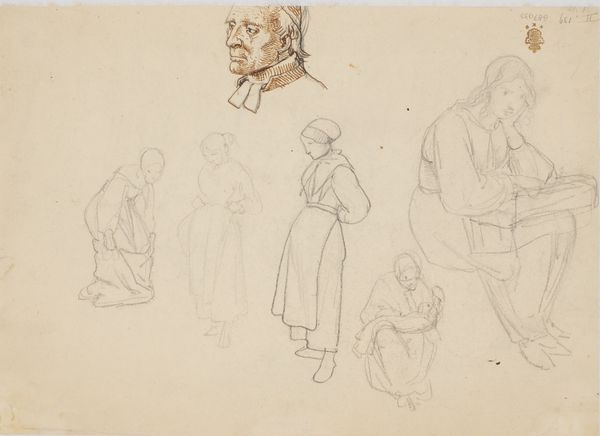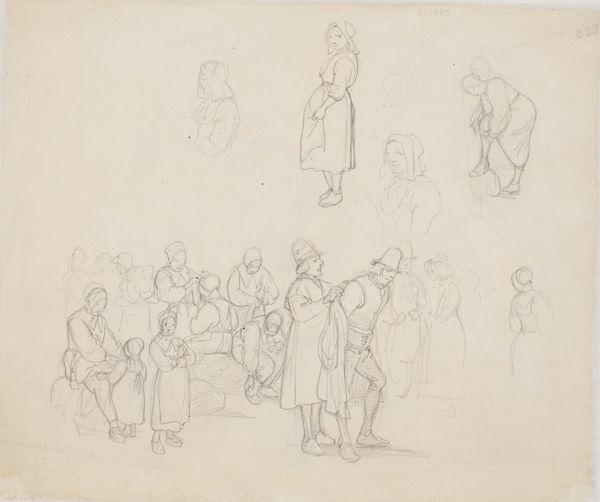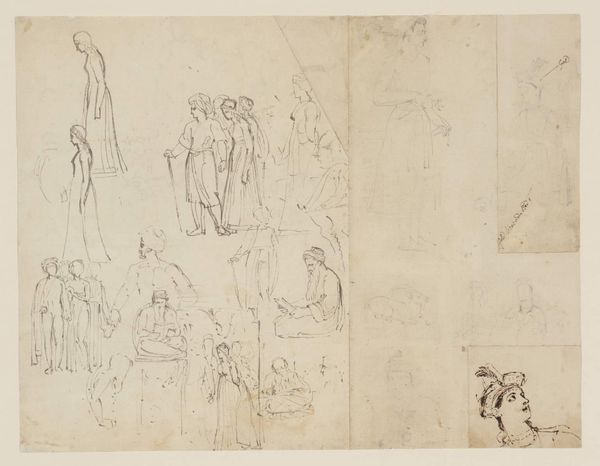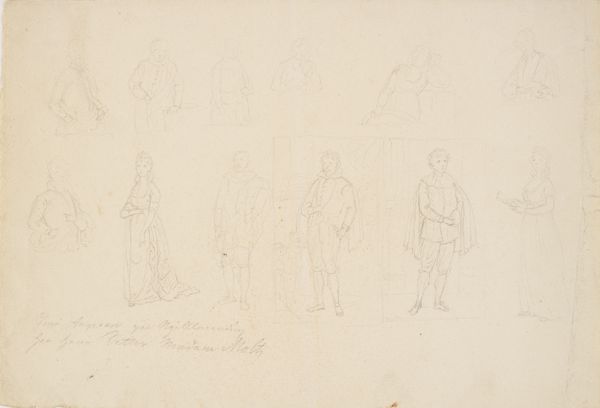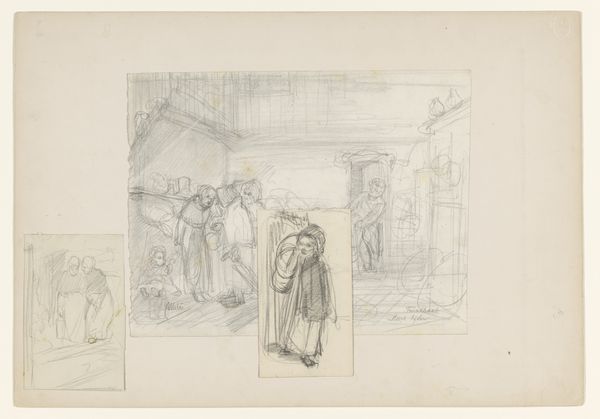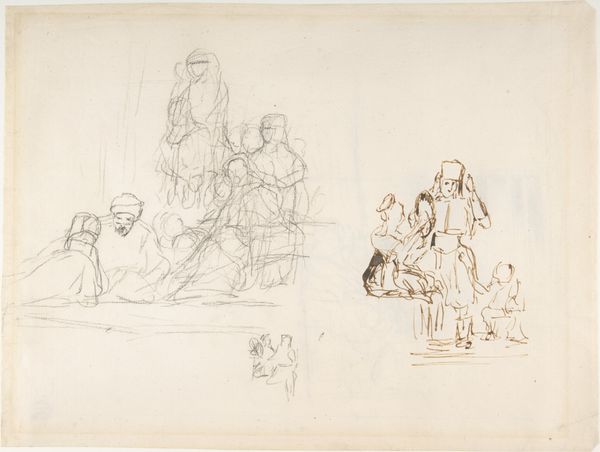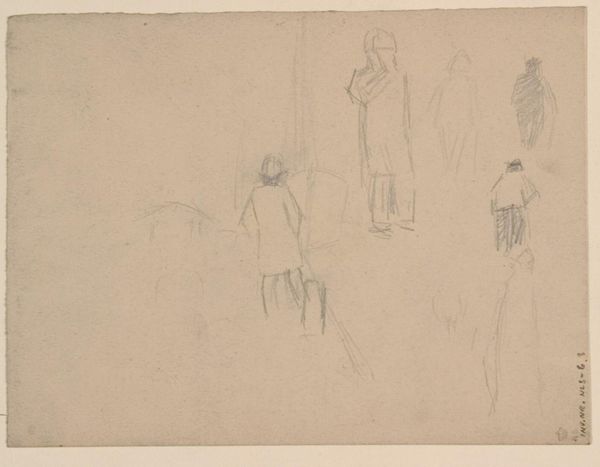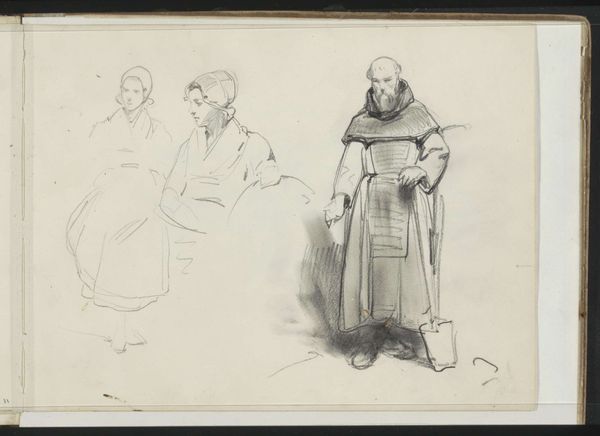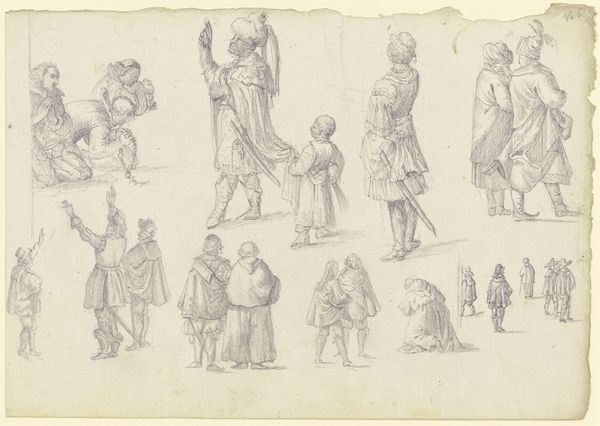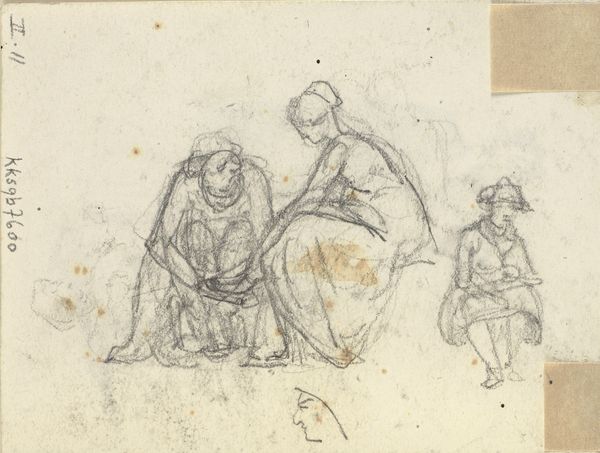
drawing, paper, pencil
#
portrait
#
drawing
#
imaginative character sketch
#
toned paper
#
light pencil work
#
sketch book
#
landscape
#
paper
#
personal sketchbook
#
idea generation sketch
#
sketchwork
#
pencil
#
sketchbook drawing
#
genre-painting
#
storyboard and sketchbook work
#
sketchbook art
#
realism
Dimensions: height 342 mm, width 392 mm
Copyright: Rijks Museum: Open Domain
Editor: This is “Studieblad met vissersvrouwen,” or Study Sheet with Fisherwomen, by Philip Sadée, made sometime between 1847 and 1904. It's a pencil drawing on paper. The composition is simple, a collection of studies on a single page. What strikes me is the evident labor etched onto these women’s postures. How do you interpret this work? Curator: It speaks volumes about the realities of labor, gender, and class in 19th-century fishing communities. Note the various poses – bent backs under heavy loads. Sadée isn't just capturing figures; he's showing us the physical toll extracted from these women who played a key role in the fishing economy. Think about the limited opportunities available to them, their social standing determined by both gender and their position within a specific industry. Editor: So you’re saying that this is not simply a genre scene, but a depiction of lived realities and the social structure of that time? Curator: Precisely! And it implicitly critiques the romanticization of rural life so common at the time. Consider the social constructs that dictated these women’s roles, limiting their autonomy and reinforcing patriarchal structures. It's about understanding the intersectional layers of their identities. This work prompts a critical dialogue about how labor is gendered and valued– or devalued– within a particular historical context. Editor: I didn't think about it in such intersectional way, I was so caught up in the formal quality of the lines themselves. Now I see the artist's implicit statement about labor exploitation. Curator: By noticing these visual details, and then considering the socio-historical forces at play, we unveil the deeper political implications of art. Editor: Thank you. It makes me realize that it is not enough to just consider form. History matters and adds a new layer to how we perceive this work.
Comments
No comments
Be the first to comment and join the conversation on the ultimate creative platform.
